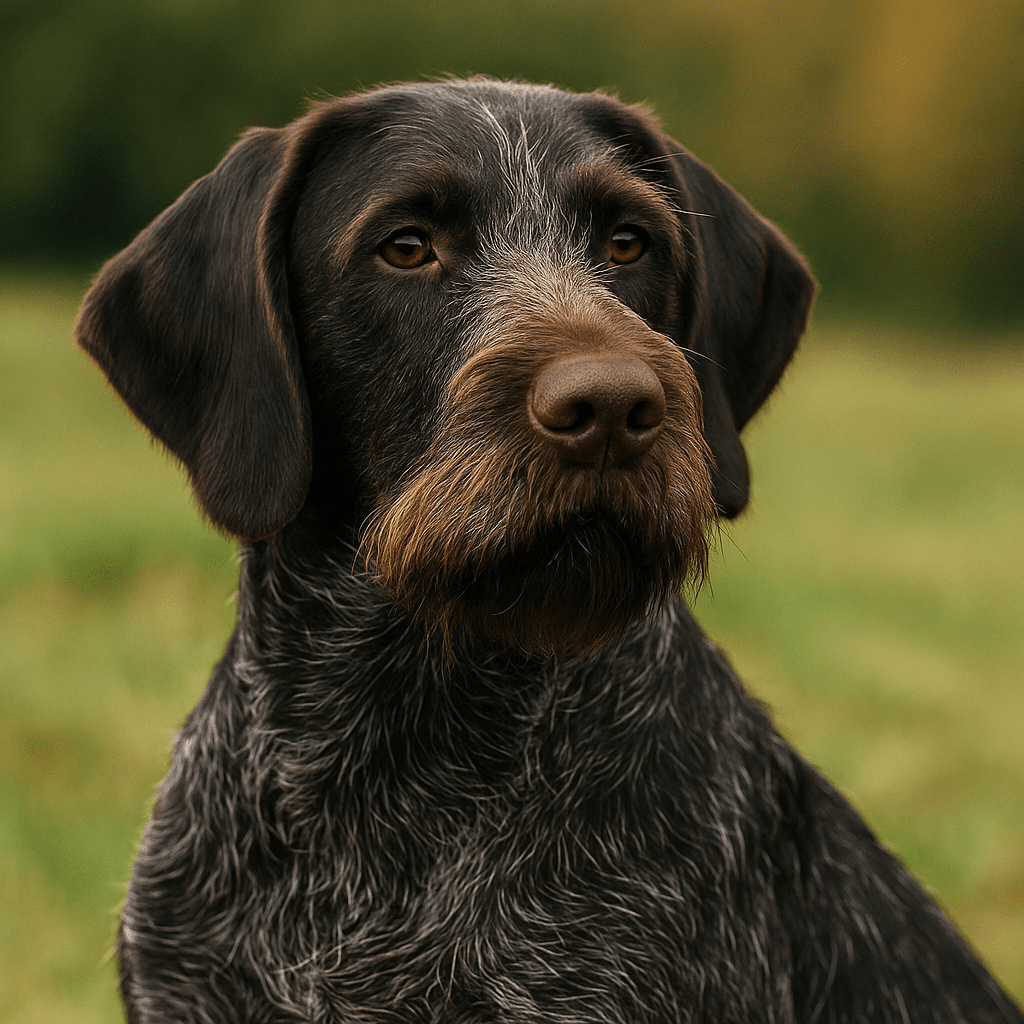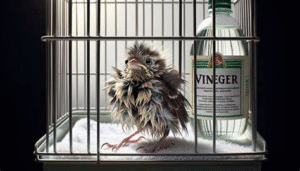A choking dog is a pet owner’s nightmare. Because dogs explore the world with their mouths, they are especially susceptible to foreign objects becoming lodged in their throat, turning a normal day into a true emergency. Knowing how to recognize the signs and what steps to take can save your dog’s life. It is vital to differentiate between a dog that has something caught in its throat and one experiencing a different issue, like a reverse sneeze or kennel cough. This guide will walk you through identifying a choking emergency, performing first aid, and preventing future incidents.
Is Your Dog Choking? How to Recognize the Critical Signs
The signs of choking depend on whether your dog’s airway is partially or completely blocked. Recognizing the difference is key to providing the right help.
Signs of a Partial Obstruction
If your dog can still pass some air, it has a partial obstruction. In this situation, their own ability to cough is the most effective tool. Watch for these signs:
- A loud, hacking cough: The dog is actively and forcefully trying to expel the object.
- Gagging or retching: You may hear gagging sounds as your dog tries to clear its throat.
- Anxiety or pacing: Your dog understands something is wrong and may appear distressed or agitated.
If your dog is coughing effectively and can still breathe, it’s best not to interfere immediately. Give them a moment to try and cough up the object on their own, as noted by the American Kennel Club.
Signs of a Complete Obstruction (Life-Threatening Emergency)
A complete blockage is a dire situation where no air can get to the lungs. This requires immediate intervention. Look for these critical indicators:
- Frantic pawing at the mouth: A dog in extreme distress will try desperately to remove the object.
- Silent coughing or gagging: The dog attempts to cough, but no sound comes out because air cannot pass.
- Labored or high-pitched breathing sounds (stridor): Any wheezing or whistling sound you hear is a sign of a severely narrowed airway.
- Blue-tinged gums and tongue (cyanosis): This indicates a critical lack of oxygen. According to PetMD, healthy gums are typically pink; blue or white gums are an emergency signal.
- Extreme panic and distress: The dog may run around frantically or have a wide-eyed, panicked look.
- Excessive drooling.
- Collapse or loss of consciousness: This is a late-stage sign of oxygen deprivation and requires immediate action.
First Aid for a Choking Dog: Safe Steps to Take Immediately
If you’ve confirmed your dog is truly choking and unable to breathe, every second counts. Your goal is to clear the airway as quickly and safely as possible. Follow these steps methodically.
Step 1: Check the Airway Visually
First, restrain your dog to protect both of you from unintentional bites born of panic. If possible, have another person help hold your dog still.
- Open the Mouth: Carefully open your dog’s mouth. Place one hand over the top of the muzzle and gently lift the upper jaw. Use your other hand to pull down the lower jaw.
- Look Inside: Use a flashlight or your phone’s light to get a clear view. Pull the tongue forward to see deeper into the throat.
- Attempt Removal (If Visible and Safe): If you can clearly see the object and believe you can grasp it, try to remove it with your fingers or a pair of blunt-nosed tweezers. Be extremely careful. Pushing the object deeper will make the situation worse. As advised by VCA Hospitals, if the object is sharp (like a bone splinter) or wedged tightly, do not attempt to pull it out, as this can cause severe injury.
If you cannot see or safely remove the object, proceed immediately to the next step.
Step 2: Perform the Canine Heimlich Maneuver
The Heimlich maneuver for dogs, also known as abdominal thrusts, is designed to use the air trapped in the lungs to force an object out. The technique varies slightly based on the dog’s size.
For a Small Dog:
- Hold your dog with its back against your chest, with its head up and paws down.
- Make a fist with one hand and place the thumb side just behind the last rib, where the abdomen is soft.
- Place your other hand over your fist.
- Give a series of 3-5 quick, firm thrusts inward and upward, as recommended by the American Veterinary Medical Association.
For a Large Dog:
- If Standing: Stand behind your dog and wrap your arms around its belly. Make a fist and place it in the soft spot behind the ribs, just like with a small dog. Use your other hand to grasp your fist and deliver 3-5 sharp, inward and upward thrusts.
- If Lying Down: Lay your dog on its side. Place one hand on its back for support. Place your other hand (cupped) on the abdomen just behind the rib cage and press firmly and quickly inward and upward 3-5 times. This method is also endorsed by the American Kennel Club.
After each series of thrusts, check the mouth again to see if the object has been dislodged. If it has, sweep it out with your finger.
Emergency Red Flags: When to Rush to the Vet
Knowing the limits of at-home first aid is just as critical as knowing how to perform it. Certain signs indicate that the situation is beyond what you can safely manage and requires immediate professional veterinary intervention.
Stop first aid attempts and go to the nearest emergency veterinary hospital immediately if you encounter any of the following:
- You cannot dislodge the object: If you have performed one or two cycles of the Heimlich maneuver without success, do not continue. Further attempts could cause internal injury. Your priority must shift to getting professional help.
- Your dog loses consciousness: A dog that has collapsed due to lack of oxygen needs emergency medical support, including potential oxygen therapy and advanced airway procedures that can only be performed by a veterinarian (PetMD).
- Your dog is in severe, escalating distress: If your dog’s panic is increasing, its breathing becomes more labored, or its gums turn a darker blue or white, this is a sign of rapid deterioration.
- You suspect the object is sharp: If you believe your dog has swallowed something like a sharp bone fragment or a piece of hard plastic, do not perform the Heimlich maneuver. BluePearl Pet Hospital warns that abdominal thrusts can cause a sharp object to perforate the esophagus or stomach, leading to life-threatening internal bleeding or infection.
- Your dog is bleeding from the mouth: Bleeding could indicate that the object has already caused significant damage to the tissues in the mouth or throat.
While transporting your dog, have someone else drive while you monitor them. Keep their head and neck extended to help keep the airway as open as possible. Call the emergency clinic ahead of time to let them know you are on your way with a choking dog so they can prepare for your arrival.
After the Incident: Monitoring Your Dog’s Recovery
Successfully dislodging a foreign object is a huge relief, but your dog’s care isn’t over. The choking event and the first aid required to resolve it can cause injuries that may not be immediately obvious. A follow-up veterinary examination is always recommended.
What to Watch For After a Choking Episode
Even if your dog seems fine, monitor them closely for the next 24-48 hours for any of these delayed symptoms:
- Difficulty Swallowing or Drooling: Pain or damage to the throat can make swallowing uncomfortable.
- Coughing or Wheezing: A persistent cough could indicate irritation or, more seriously, fluid in the lungs from aspiration pneumonia (PetMD).
- Lethargy or Depression: Excessive tiredness can be a sign of internal pain or a developing infection.
- Pawing at the Mouth: This suggests continued discomfort in the mouth or throat area.
- Changes in Bark: A hoarse sound can point to inflammation or injury to the larynx (voice box).
Why a Vet Visit is Essential
A post-choking check-up is crucial. Your veterinarian can:
- Check for Internal Injuries: The Heimlich maneuver, while life-saving, can sometimes cause bruising or damage to internal organs or even crack a rib (VCA Hospitals).
- Inspect the Throat and Mouth: A vet can properly examine the throat for cuts, scrapes, or punctures that could become infected.
- Rule Out Aspiration Pneumonia: If your dog inhaled foreign material, it can lead to a serious lung infection. A vet can listen to the lungs or recommend X-rays if this is a concern.
- Ensure the Entire Object is Gone: Sometimes, an object can break apart, leaving smaller fragments behind to cause further issues.
Your vet may recommend a soft diet for a few days to allow your dog’s throat to heal. Promptly addressing any lingering issues ensures a full and safe recovery.
How to Prevent Choking in Dogs: A Proactive Owner’s Guide
While knowing first aid is essential, preventing a choking incident is the best strategy. Most choking events are avoidable with careful management of your dog’s environment, food, and toys.
1. Choose Size-Appropriate and Safe Toys
The most common choking hazards are toys that are too small for the dog.
- Select toys larger than your dog’s throat. A good rule is that a toy should not be able to fit entirely inside your dog’s mouth.
- Avoid easily destructible toys. For power chewers, provide durable rubber toys. As noted by The Humane Society of the United States, soft plush toys can be easily ripped apart, and the stuffing or squeakers can be swallowed.
- Supervise playtime. Regularly inspect toys for wear and tear and discard any that are breaking apart.
2. Manage Mealtimes and Treats
Dogs that eat too quickly are at a higher risk of choking.
- Use a slow-feeder bowl or food puzzle. These tools force your dog to eat more slowly.
- Cut treats into manageable sizes. Ensure treats are small enough to be swallowed easily or large enough to require significant chewing.
- Be cautious with chews and bones. Avoid cooked bones, which splinter easily. The American Kennel Club warns that rawhide chews can become soft, allowing dogs to tear off and swallow large, dangerous pieces. Always supervise your dog with any edible chew.
3. “Dog-Proof” Your Home and Yard
Dogs often chew on and swallow non-food items they find around the house.
- Keep small objects out of reach. Be mindful of children’s toys, socks, rocks, bottle caps, and corn cobs.
- Secure trash cans. Use trash cans with secure lids to prevent access to dangerous discarded items.
- Supervise your dog outdoors. Sticks, rocks, and acorns are common natural choking hazards. Teach your dog a reliable “leave it” or “drop it” command.
By being proactive and supervising your dog’s activities, you can significantly reduce the risk of a frightening and potentially fatal choking emergency.











